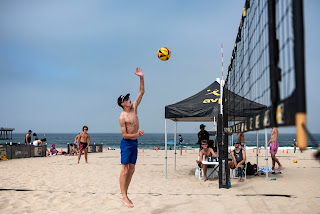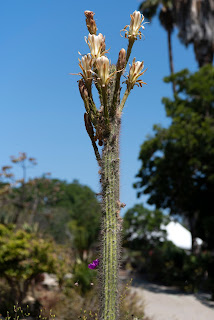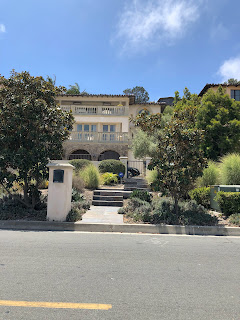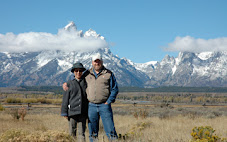Oh, My Heart
Heart Attack
I had been riding my bicycle to Ogden (55 miles) or Roy (46 miles) each week for many weeks. I like Roy, because the bike trail passes very close to the Front Runner train platform, so I can easily ride the train home.
Somewhere near Clearfield is a 1.7-mile uphill grade, where I like to push myself, sometimes getting my heart rate to 167 (my max) at about 19 mph up the second half of the hill. It isn’t a steep grade at all, but it is a nice, uninterrupted climb. The only crossroad, Hillfield Blvd., I think, goes overhead.
On a 95°F July 16, 2019, I went for my normal Roy ride. I think it was on the grade that I started to feel uncomfortably tired. I continued toward the Roy station, but I wasn’t feeling well. I thought maybe I had a bit of heat stroke. I passed a park that has a big tree and shady grass next to the bike trail, and I considered stopping to take a rest. But I was worried that if I fell asleep I might not wake up, so I kept riding. Yeah, I was feeling pretty cruddy. I arrived at the Roy station, very spent. I boarded the train, which has a bike car, and placed my bike in the rack. On the 1-hour, 15-minute ride to the Murray station I think I slept most of the way.
At the Murray station, I unloaded my bike from the rack and exited the train. I was so exhausted from getting off the train that I had to sit on a bench and rest for a few minutes. On the way off the platform, I presented my UTA pass at the beeper post, and when I did, I dropped my wallet on the ground. I bent over to pick it up, but my right hand fingers would not close on the wallet. At that moment I thought maybe I was having a stroke. I was able to pick the wallet up with my left hand. I loaded my bike onto my Toyota Sequoia’s bike rack and secured it with an Ottolock, using only my left arm. I drove to the Intermountain Medical Center (IMC) Emergency Entrance across the street from the train stations.
The ER doctor did an EKG—actually, I don’t remember what he did—but I do remember the doctor with several nurses standing in a semicircle showing me the EKG and telling me that I’d had a heart attack. One of the nurses was John Nelson’s daughter. John is our neighbor. I told him that the T wave on my EKG has always been weird; it dips when it should peak. I learned later from my cardiologist, Dr. Edward Miner, that the hospital had called him to come in. He was the cardiologist on call. When I told the ER doctor that my abnormal EKG was normal, the hospital called Dr. Miner and told him to never mind. He was already on his way, so he came in anyway.
The hospital staff hauled me to the catheter laboratory (cath lab), where Dr. Miner fed a catheter up the artery in my right wrist and removed a blood clot that was blocking my right artery by 99 percent. He also inserted a stent to open the artery, which was 90 percent blocked even without the clot.
He would have placed a stent in my left artery, which was also 90 percent blocked, but I was so dehydrated from the long, hot bike ride that my kidneys were shutting down and couldn’t handle the dye needed to place the stent. I spent the next four days in the heart intensive care unit (ICU), mostly waiting for my troponin level to drop.
Troponin is a protein in the heart muscle that is released when there is trauma to the heart. The normal level is 0 to 0.04 ng/ML. Mine reached 49.11. I couldn’t go home until it dropped to about 30. They released me when it finally fell to 31.72 on July 19.
Two weeks later, after I worked on getting hydrated, I went back to the cath lab, where Dr. Miner inserted the left artery stent through the same artery in my right arm. The anesthesia was a combination of Versed, also called the amnesia drug, because it doesn’t fully sedate patients, but it blocks their memory of the procedure, and a pain killer such as fentanyl. I tried to force myself to remember both stent procedures, but I only remember Dr. Miner showing me the blood clot in a tiny plastic cup, and I remember the back of a big monitor and some other equipment in the room. I also remember Dr. Miner in a heavy rubber-looking full-front apron with blood splattered on it.
After the stents, I don’t remember there being a recovery period. I wasn’t allowed to lift anything over five pounds with my right arm for a couple days due to the hole in my artery, but that was it.
On August 20, I went for a trial bike ride and ended up in Ogden, where I stopped at Cold Stone Creamery for a chocolate almond medium-size ice cream. That’s always my reward when I go to Ogden.
On September 12, I went for a pretty tough mountain bike ride (for me) on the North Klondike Trail in Moab.
On October 17, I rode my bike 66 miles on Route 66 in Arizona while I was 66 years old. Randy was supposed to ride with me, but he had crashed into a 4-inch x 3-foot pole on a training ride and was pretty banged up, so he drove my support car.
Over the winter I refinished our kitchen cabinets and had granite countertop installed and bought a new refrigerator. I also completely ripped out the room in our basement and built it into an exercise room.
Oh, yeah. We also prepaid our funerals just in case.
Atrial Fibrillation (A-Fib, or Afib)
In the summer of 2022, I was riding my bike to Ogden or Roy, when my heart rate suddenly shot to 180 beats per minute. My max is about 165. On the train ride back to Murray, it didn’t slow very much. Normally, my heart rate slows very quickly to below 70 after I stop exerting myself. I contacted my cardiologist, Dr. Miner, who ordered a heart rate monitor. This was an annoying device with electrodes that I had to stick to my chest 24 hours a day for 30 days. The adhesives caused rashes, so I had to move them to different locations on my chest until there were no spots left that weren’t red and irritated. After the 30 days, I returned the device to some lab. Then I didn’t hear anything. Sometime later, I called Dr. Miner’s office, and the nurse told me the test came back negative for any abnormalities.
I joined the Planet Fitness gym so I could do squats—I can do most other exercises at home. I also lifted other weights at Planet Fitness and used their bikes and stair steppers. While on a stair stepper in the summer of 2023, my heart rate was about 125, which is about where I like to keep it when I’m doing mild exercise like riding my bike at about 17 mph to about Farmington. As I tire, my heart rate goes to about 135 to maintain the same speed. On the stair stepper I decided to kick my heart to 135, so I turned up the speed of the stepper a bit. My heart suddenly shot to 180. I stopped exercising, but my heart rate wouldn’t drop below about 160 or 170. I drove to the IMC ER. I was admitted, and the ER doctor and cardiologist spent most of the day running tests. They scheduled me for a cardioversion, which is where they attach a large electrode to your chest and one to your back. They then push a button, and an electrical charge bounces your body off the table (I really don’t know, but that’s what happens on TV), your heart stops, and when it starts it should be in sinus (normal) rhythm (the stop start part is real). They then chose not to do the cardioversion, because my heart was popping in and out of a-fib. In the end, I was put on Amiodarone (slows electrical signals but has side effects such as damaging the thyroid and liver) and Metoprolol (beta blocker to lower the heart rate). I was also assigned to Dr. Brian Crandall, the same heart rhythm doctor who treated Chieko for v-tack 30 years ago.
In my first visit with Dr. Crandall, I told him that I didn’t like the Amiodarone and Metoprolol, because I couldn’t get my heart rate over about 110 and had no endurance for doing any exercise.
For example, I was visiting Dr. Romney, my primary care doctor, when Kim, his nurse called me back, I stood up quickly and became faint. The next thing I remember was that I was on the floor and my phone was across the room. Kim kept saying, “Your ankle, your ankle,” which was pushed up against the door frame but was okay. I told Dr. Romney that I blamed the Metoprolol, and he said I was exactly right. So, I quit taking the Metoprolol.
After I told Dr. Crandall that I didn’t like the drugs, he said to keep taking them and see him in a year.
I said, “Wait a minute. Isn’t there something else we can do, like an ablation?” A successful ablation would prevent the errant electrical signals and make the drugs unnecessary.
He said, “Oh, yea, we can do that.”
I went in for an ablation in June 2023. With me under general anesthesia, propofol, I think, Dr. Crandall fed two catheters into my heart, a sensor up the vein in the top of one leg and a radio wave burner up the other leg. He used the radio wave catheter to burn tissue around the part of the heart that the sensor indicated was sending crazy signals. After the procedure, Dr. Crandall told me it would take a month or two and up to three months for the scar tissue to form and block the signals. I stayed on Amiodarone during this time.
My heart stayed in afib all summer., so Dr. Crandall had me go in for a cardioversion. The staff zapped me twice, but my heart did not go back into sinus rhythm. They told me to come back in a week to do it again, which I did with the same results: Two zaps, still in afib.
Dr. Crandall kept assuring me that the ablation could take up to three months to work. In December, he ordered another ablation. On the day of the ablation I was taken to a small room where they said I would come back to after the procedure, and Chieko could take me home from there. She went to breakfast during the procedure. Instead of waking up in the recovery room, I woke up in a big room with Chieko and Sara standing by my bed. I was told Brian Austin and Steve Neiswender had also stopped by. I had a big plastic pipe down my throat attached to a ventilator, a white tube coming out of the middle of my chest draining blood into a 500 ml bag in my lap, three IVs in my arms, a catheter draining my bladder into a bag on the side of the bed, my wrists strapped to the sides of the bed so I couldn’t move, and a nurse with her hand jammed into my crotch to put pressure on the artery where the doctor had inserted a temporary blood pressure monitor, in addition to the holes in my veins in the same area. Apparently, my heart perforated during the procedure. With a hole in my heart, it was pumping blood into the pericardium, which is an inflexible sac surrounding the heart. When it fills with blood, it puts pressure on the heart, so the heart can’t flex and pump blood. The 500 ml bag in my lap was abut 1/3 full, and another 500 ml bag had already been filled. I probably lost just under a quart of blood, but luckily the hole sealed itself and didn’t require the doctor to open my chest and sew it.
After a couple days in the ICU, I came home.
In January, Dr. Crandall wanted my heart in normal rhythm so it would heal better, so I went in for another cardioversion. This time it worked, but it lasted only five or six days. On the following Monday, after the cardioversion and after I’d gone back into a-flutter, I went to Dr. Crandall’s office for an EKG, which showed that I needed another cardioversion, which was scheduled on Wednesday. On Wednesday morning on the cardioversion table, the staff connected me to an EKG machine and determined my heart had gone into sinus rhythm on its own. And it stayed there.
About this time, I was having pain in my right Achilles. I finally went to a sports medicine doctor, Dr. Richards, in Bountiful (recommended by Dr. Romney), who did an ultrasound and determined I had tendonopathy, which is a buildup of “crap” (the doctor’s word) in the tendon. We were going to Japan in April, so I decided to take care of that after we got back. I hobbled around Japan with a cane for three weeks. It was quite painful. On May 9, Dr. Eric Robinson in Spanish Fork did a Tenex procedure on my Achilles. Tanner video recorded the whole procedure with my GoPro camera. The doctor injected Lidocaine into the tendon and then inserted a metal rod that vibrated and broke up the bone, calcium, protein, and whatever else made up the “crap.” It also sucked it out. This is taking several weeks or months to heal. I just started physical therapy.
The bottom line is that I haven’t been on a bike ride in over a year. This, after I spent $3,600 buying a new ($4,500) bike, $3,200 upgrading the components to electronic Ultegra, and $1,000 for power meter pedals. I’ve been on another bike in our basement a few times, but that’s about all the exercise I’ve been getting.
In early June 2024, I had a regular appointment with Dr. Crandall, and he informed me that my heart rate was 85, and my heart was back in something close to a-flutter. My normal resting heart rate has been close to 40, maybe 42, for many years, so 85 is alarming to me. Dr. Crandall is hesitant to do another ablation because, “It’ll probably be okay, but we don’t know why it perforated last time. Maybe the heart wall is thin right there. Don’t worry as long as your resting heart rate remains under 100. Even 180 is okay for a couple hours. Go home and see me in a year.” (Not his exact words, but his exact meaning.) I went home and mowed the lawn. Afterward, I felt like passing out. I called Dr. Crandall’s office, and they told me to go back on Metoprolol.
My Apple Watch then showed my EKG was totally whacko after I lifted some weights.

It then settled into afib. I sent the charts to Dr. Crandall, who responded by saying I had gone back into afib. He represcribed Amiodarone and scheduled another cardioversion.
Today is Saturday, June 22. The cardioversion is on Monday, June 24.
Side story about Walgreens Pharmacy. We haven’t been very happy with Walgreens, but they do have convenient hours, and that’s the pharmacy all our doctors have in their records to send prescriptions. Several months ago, Chieko’s doctor sent a cough medicine prescription to Walgreens. They’re supposed to text or email when prescriptions are ready, but they never, ever do. We’ve learned to show up for the prescription, and they will then spend 20 minutes filling it. For the cough medicine, I waited until late evening to go. The guy at the register told me that they couldn’t fill the prescription because the doctor specified an amount that they don’t carry. “Thank you for letting me know five hours ago, when you received the prescription. Now all other pharmacies are closed.”
Yesterday, I stopped to pick up my Amiodarone prescription. The girl stared at the computer for a long time and then said that nothing had come in.
Her: “What’s your name again?”
Me: “Astle.”
Her: “Oh, yeah, something did come in earlier, but it was put in the holding tank (or something like that). It’s for amaiadron.”
Me: “For what?”
Her: “Amaiadron.”
Me: “That sounds very similar. It’s called Amiodarone.”
Her: “Ok. It’ll be ready in 20 minutes.”
It’s now Monday, June 24, 2024, cardioversion day.
I woke up early. Actually, I kept waking up all night. Checked my Apple Watch, and my heart was in afib. Got to the hospital about 7:45 for my 8 a.m. procedure. My Apple Watch appeared to show my heart in normal sinus rhythm. I walked down the hall to the restroom, and when I got back, my heart rate was erratic. In the exam room, the preliminary EKG appeared to show normal heart rhythm, so I did 20 pushups. The more complex showed my heart in afib, but then it popped back into sinus rhythm. Zac, the physician assistant (PA) said that cardioversion was not a good option for hearts going into and out of afib. So, Chieko and I went to breakfast in the hospital cafeteria and came home.







































































































